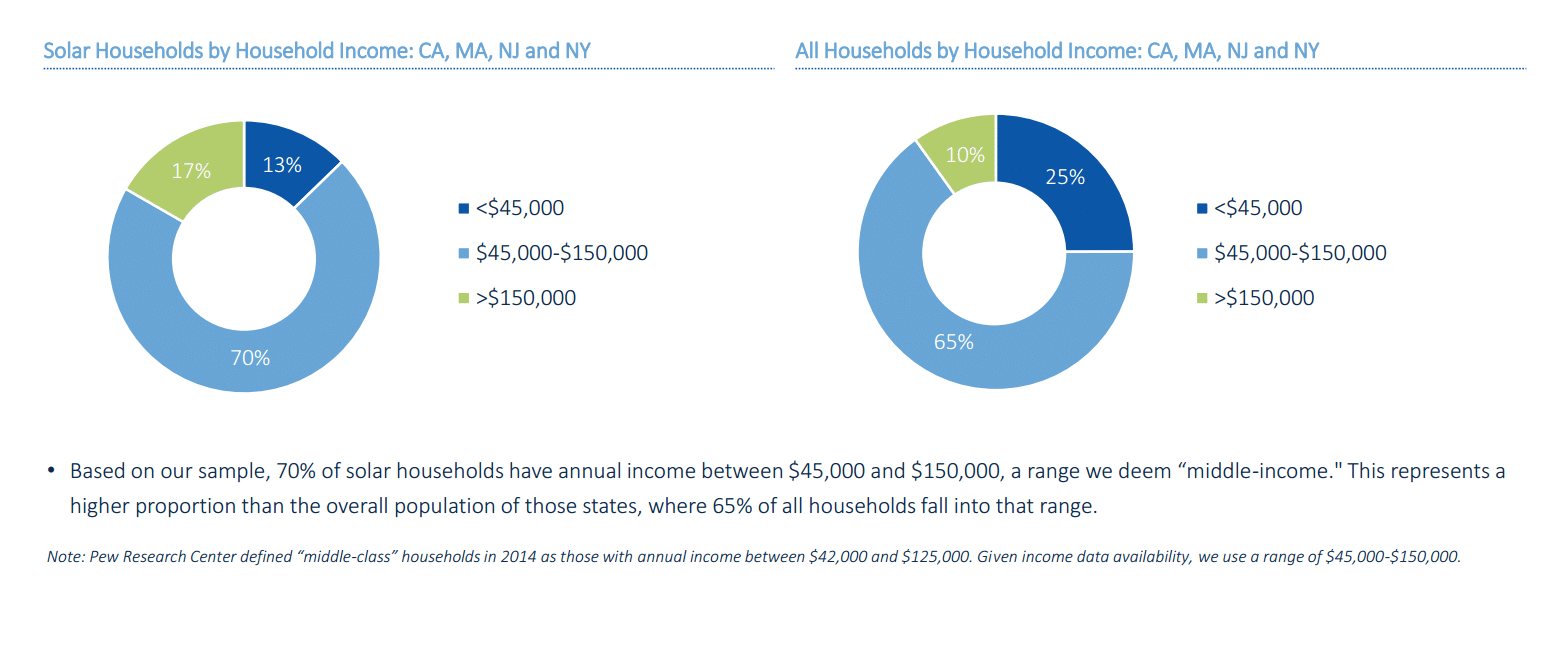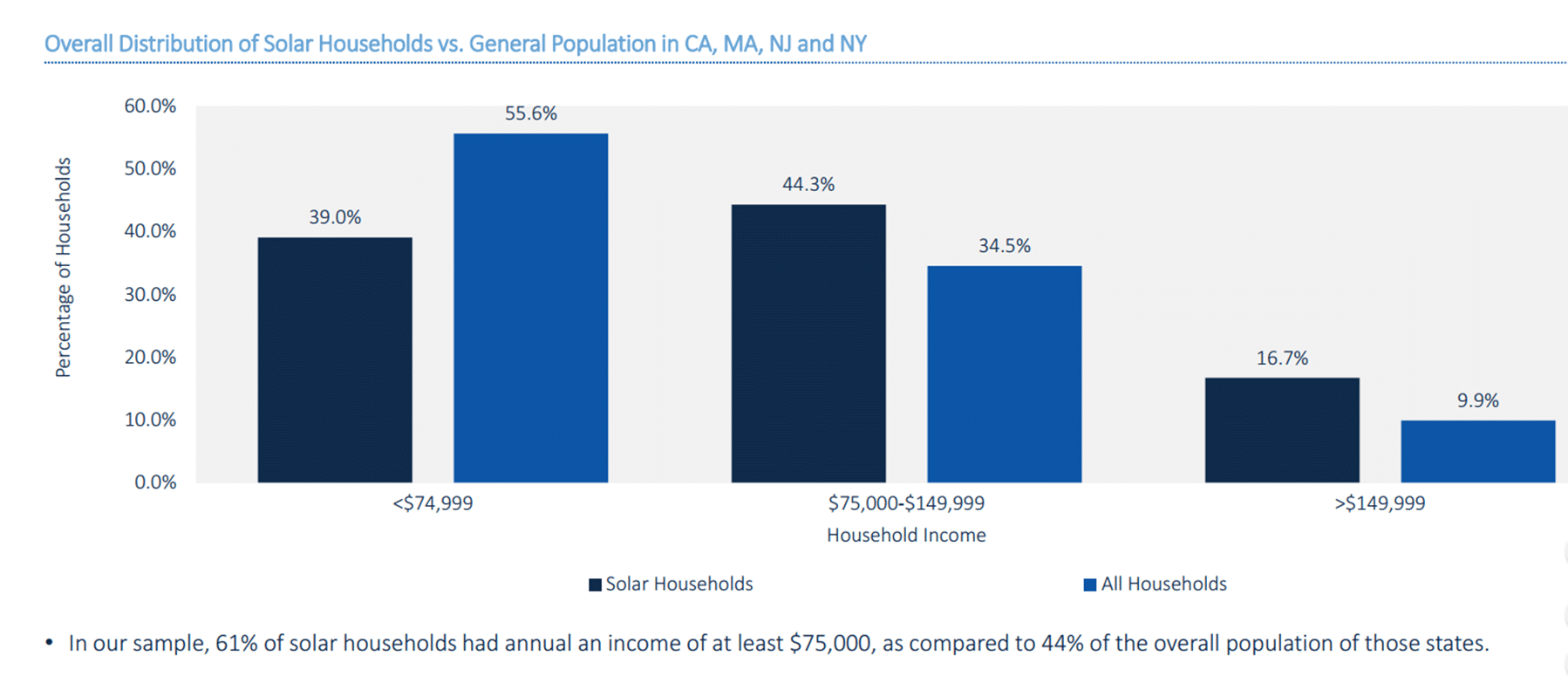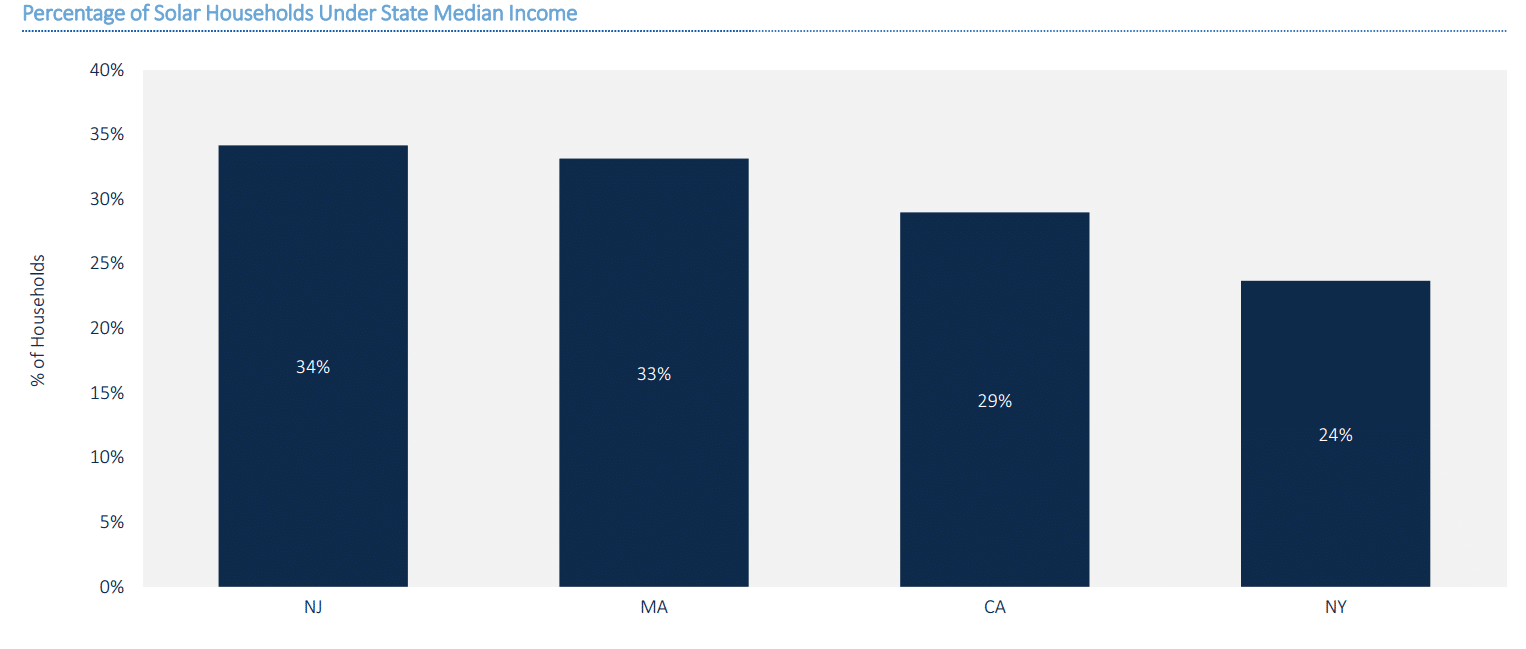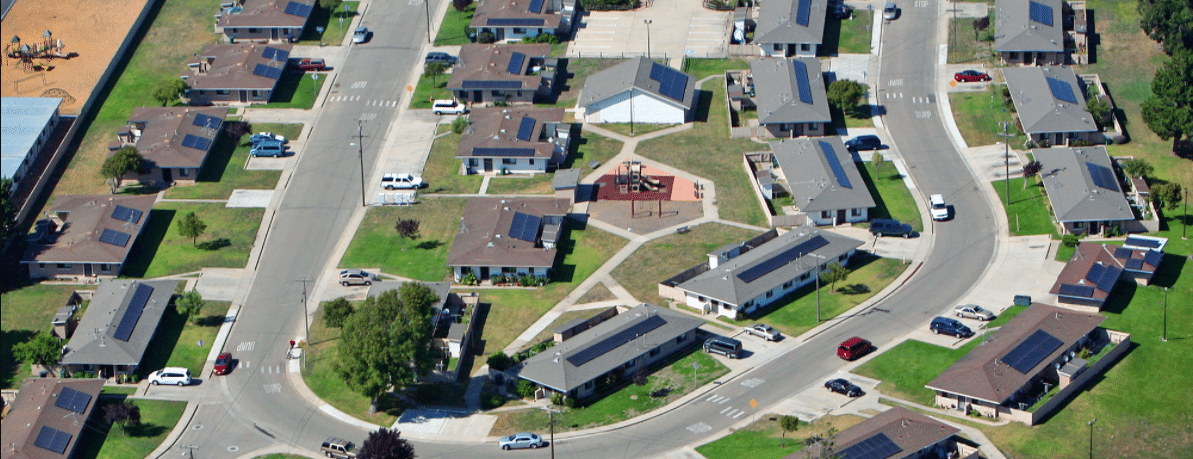One myth still plagues the solar industry, despite increasingly being proved wrong by, you know, facts: People who install solar systems on their roofs are eminently wealthier than non-solar consumers.
The reason this myth is dangerous for two reasons. First, it allows solar’s critics to paint the increasingly popular energy producer as the province of an out-of-touch elite instead of a power source for everyone. Second, it may discourage otherwise excellent solar customers from looking into installing it on their roofs because of the mistaken belief it is too expensive.
New research produced by GTM Research and PowerScout, however, may put lie to this myth for good.
The study examined the household income differential between solar and non-solar homeowners in California, Massachusetts, New Jersey and New York. These states currently account for 65% of all residential installations in the country. In examining the data, GTM and PowerScout discovered that 70% of solar households have a medium income between $45,000 and $150,000, which the studies authors say is middle income.

It is true that within that middle-income group, overall incomes skew higher than those of the general population of those states, and the authors say the average household income for solar adopters is $75,000 per year. They also acknowledge their research doesn’t necessarily apply to the entire United States and should be replicated at a later date with a broader geographic diversity.

One market the report’s authors say is significantly underserved is low-income households, although significant progress has been made in these four states. With 532 MW currently installed, these four states are currently generating more than half of the 1 GW-by-2020 goal for low-income neighborhoods set by the Obama Administration’s Clean Energy Savings for All Americans Initiative in July.
The authors credit organizations like GRID Alternatives, which focuses on low-income solar installation, with fostering this level of adoption to date and suggests other industry players should get involved as well to push the number even higher.

What surprised the authors is that is the income distribution of solar households is more wealthy in California and New York than it is in Massachusetts and New Jersey. They offer the following potential explanations:
- Subsidies: In New York, the state provides an additional tax credit (up to $5,000) that can only be used by the customer. PPA/lease providers cannot take advantage of this incentive and pass along savings to the customer.
- Rate Structure: In California, tiered electric-rate structures may have provided additional incentive for households with high electric consumption (which tend to be wealthier) to adopt solar
- Timing of Adoption: In more mature markets (e.g., California), many solar installations occurred when solar system prices were higher and were likely driven by early adopters (who tend to be wealthier)
- Network/Neighborhood Effects: Various factors above may have been magnified by network/neighborhood effects – people whose neighbors have gone solar are more likely to adopt solar themselves
This content is protected by copyright and may not be reused. If you want to cooperate with us and would like to reuse some of our content, please contact: editors@pv-magazine.com.








By submitting this form you agree to pv magazine using your data for the purposes of publishing your comment.
Your personal data will only be disclosed or otherwise transmitted to third parties for the purposes of spam filtering or if this is necessary for technical maintenance of the website. Any other transfer to third parties will not take place unless this is justified on the basis of applicable data protection regulations or if pv magazine is legally obliged to do so.
You may revoke this consent at any time with effect for the future, in which case your personal data will be deleted immediately. Otherwise, your data will be deleted if pv magazine has processed your request or the purpose of data storage is fulfilled.
Further information on data privacy can be found in our Data Protection Policy.